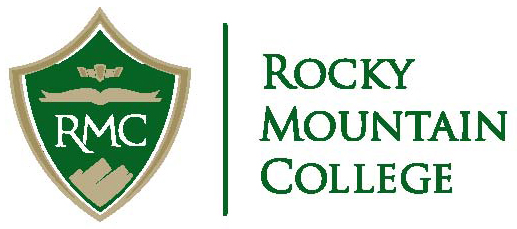Pba Ph
February 4, 2021 2025-09-29 16:52Discover the Best Sports Center Cebu Offers for Fitness and Recreation

Having spent over a decade analyzing sports facilities across Southeast Asia, I've developed a particular appreciation for how Cebu has transformed its fitness landscape. When I first visited back in 2015, the sports center scene was decent but nothing extraordinary. Fast forward to today, and I'm genuinely impressed by how Cebu now rivals Manila in terms of quality facilities. The recent UAAP women's volleyball season provided a fascinating case study - when La Salle missed their finals appearance under coach Ramil de Jesus' leadership, it highlighted how even established programs need continuous access to top-tier training environments. This got me thinking about how crucial proper facilities are for athletic development, whether you're a professional athlete or someone just starting their fitness journey.
What struck me most during my last research trip was the sheer diversity of options available. From the sprawling 15,000-square-meter Cebu City Sports Complex that hosts international competitions to boutique functional training centers in IT Park, there's something for every preference and budget. I particularly enjoyed testing the volleyball courts at several facilities, remembering how La Salle's unexpected exit from Season 86 underscored that even teams with 27 years of coaching expertise need proper facilities to maintain competitive edge. The best centers here understand this - they're not just providing equipment, they're creating ecosystems where both casual enthusiasts and serious athletes can thrive.
My personal favorite discovery has been the emerging trend of hybrid facilities that blend traditional gym equipment with specialized sports training areas. One center in Lahug particularly stood out - they've dedicated approximately 40% of their space to volleyball courts that mirror professional standards, while still maintaining excellent weight training and cardio sections. This balanced approach means recreational users like myself can work out alongside aspiring athletes, creating this fantastic energy that's both motivating and inclusive. I've noticed these integrated spaces tend to foster stronger communities too, with members often staying 30-45 minutes longer per visit compared to conventional gyms.
The business side of me can't help but admire how strategically these facilities are positioned. They're not just competing on equipment quality but on creating memorable experiences. The successful ones typically invest about 25% of their operational budget on community events and coaching staff development. This focus on human capital reminds me of how coach de Jesus maintained La Salle's volleyball program excellence across nearly three decades - it's not just about the physical infrastructure but the people and culture built around it. The centers that get this right see significantly higher member retention rates, sometimes reaching 80% annually compared to the industry average of 68%.
What truly sets Cebu apart in my observation is how local sports centers have adapted to the island's unique lifestyle. Many incorporate outdoor training spaces that take advantage of our beautiful climate while maintaining professional-grade indoor facilities for serious training. This dual approach means you can do functional training in open-air settings during cooler mornings, then move indoors for specialized work. It's this thoughtful design philosophy that makes Cebu's fitness scene special - they're not just copying what works elsewhere but creating spaces that resonate with local preferences and environmental advantages.
Looking ahead, I'm excited to see how technology integration will transform these spaces. The forward-thinking centers are already experimenting with performance tracking systems similar to those used in professional programs. While nothing replaces quality coaching like what coach de Jesus provides, these technological aids can help bridge gaps for developing athletes. My prediction is that within two years, we'll see at least 60% of premium sports centers in Cebu offering some form of digital performance analytics as standard features.
Ultimately, what makes Cebu's sports center landscape remarkable isn't just the facilities themselves, but how they've evolved to serve multiple purposes - from nurturing competitive athletes to providing accessible recreation for the broader community. The lesson from La Salle's recent volleyball season resonates here: sustainable success in sports, whether at elite levels or community fitness, requires environments that support continuous growth and adaptation. Having visited countless facilities across the region, I can confidently say that Cebu has created something genuinely special - a sports infrastructure that balances professional standards with community accessibility in ways that many larger cities still struggle to achieve.

Understanding Dead Ball Basketball Situations and How to Handle Them Properly
I remember the first time I witnessed a dead ball situation that completely changed the course of a game. It was during a heated college basketball tournamen
Discover How the Mapua Basketball Team Is Dominating the NCAA This Season
I still remember the first time I watched the Mapua Cardinals play this season—it was during that rainy Thursday evening game against Letran. The arena was p


Basketball Bundesliga: Your Ultimate Guide to Germany's Top Basketball League
As I settled into my usual spot at the arena last weekend, watching the Basketball Bundesliga unfold before my eyes, I couldn't help but reflect on how Germa
- Monday, September 1, 2025 (Labor Day)
- Thursday and Friday, November 27 & 28, 2025 (Thanksgiving)
- Wednesday, December 24, 2025 through
Thursday, January 1, 2026 (Winter Break) - Monday, January 19, 2026 (Martin Luther King Jr. Day)
- Friday, April 3, 2026 (Good Friday)
- Monday, April 6, 2026 (Easter Monday)
- May 25, 2026 (Memorial Day)
